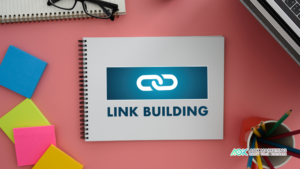Anchor text might seem like a small detail in your SEO strategy, but its impact is significant. Whether you’re building backlinks or strengthening your internal linking structure, the words you choose to hyperlink—known as anchor text—can directly influence your rankings, user engagement, and credibility in the eyes of search engines.
In this guide, we’ll explore its different types, how it affects SEO, and best practices to optimize it for both users and search engines.
What Is Anchor Text?
Anchor text is the visible, clickable text in a hyperlink. It usually appears as underlined blue text by default, though it can be styled differently with CSS.
Example:
Check out our SEO content strategy guide for more insights.
Here, “SEO content strategy guide” is the anchor text. It tells both users and search engines what to expect when they click the link.
Why It Matters for SEO
plays a vital role in how search engines interpret and rank your content. Google uses anchor text to understand:
-
The topic of the linked page
-
The context of the link
-
Relevance between linking and linked pages
Well-optimized anchor text can improve a page’s ranking for specific keywords. On the flip side, over-optimized or irrelevant anchor text may be seen as manipulative, triggering penalties from search engines.
Types of Anchor Text
Understanding the different types of links helps you use them strategically:
1. Exact Match
Includes the exact keyword you want to rank for.
Example: digital marketing agency
2. Partial Match
Contains a variation of the keyword.
Example: best tools for digital marketers
3. Branded
Uses the brand’s name.
Example: Moz
4. Naked URL
Just the raw link.
Example: https://www.example.com
5. Generic
Non-descriptive words.
Example: Click here, Read more
6. Image Anchor
When an image is hyperlinked, the alt text serves as the anchor.
7. LSI (Latent Semantic Indexing) Keywords
Related terms or synonyms.
Example: content creation techniques for a page targeting “SEO writing tips.”
Anchor Text and Google’s Algorithm
Google’s Penguin Update (first launched in 2012) targeted unnatural link profiles, including manipulative anchor text strategies. Since then, using keyword-rich anchor text excessively can hurt your rankings.
Today, Google favors natural, diverse, and relevant anchor text that adds context to both users and crawlers.
How to Optimize Anchor Text for SEO
1. Prioritize Relevance
The text should match the topic of the linked page. Misleading anchor text creates confusion and hurts SEO.
Good:
SEO copywriting techniques linking to a guide on SEO writing.
Bad:
Top football tips linking to an SEO guide.
2. Use a Natural Mix
Don’t rely solely on exact match text. Use a healthy mix of branded, partial match, and LSI keyword anchors to avoid over-optimization.
3. Keep It Descriptive
Avoid vague terms like “click here.” Instead, provide context about what the user will find.
Instead of:
Click here to learn about email marketing.
Use:
Learn how email marketing boosts conversions.
4. Match User Intent
Anchor text should align with the user’s goal. If someone wants a beginner’s guide, label the link accordingly—not as “advanced strategies.”
5. Limit Keyword Stuffing
Overusing keyword-rich anchors on a single page or across multiple backlinks can raise red flags.
6. Optimize Internal Links
Use anchor text to guide crawlers and visitors across your site. For example:
-
Link to service pages from blog posts using relevant keywords.
-
Use varied but contextually accurate terms to avoid repetitive patterns.
7. Set External Link Anchors Carefully
When linking to external sites, use accurate anchor text that reflects the target page’s content. Misleading anchors can harm user trust and SEO signals.
Best Practices Checklist
-
✅ Keep it concise and descriptive (4–8 words is ideal)
-
✅ Ensure relevance between the linking and linked content
-
✅ Use a natural variety of anchor types
-
✅ Avoid overusing the same keyword
-
✅ Place links where they add value in the content
-
✅ Include keyword-rich anchors sparingly
-
✅ Use ALT tags properly for image-based anchors
Common Mistakes to Avoid
-
Over-Optimization
Using exact match keywords in every link can lead to penalties. -
Irrelevant Links
Don’t use texts that doesn’t reflect the destination content. -
Too Many Generic Anchors
“Click here” adds no context for SEO or accessibility. -
Broken or Outdated Links
Regularly audit links to ensure they’re live and pointing to the correct page.
Real-World Example
Let’s say you run a blog about sustainable fashion. Here’s how you might structure your links naturally in an article:
“If you’re interested in ethical production, check out our guide to sustainable materials. For those looking to revamp their closet, this list of eco-friendly clothing brands is a great place to start.”
This approach informs users, signals relevance to search engines, and supports keyword variation.
Final Thoughts
Anchor text may be just a few words, but it has outsized power when it comes to SEO and usability. Whether you’re building links, creating internal pathways, or guiding readers to new resources, optimized anchor text enhances trust, relevance, and search visibility.
About The Author
Marketing Team
The AOK Marketing Team is a diverse group of amazing individuals driven to help all of our clients succeed. Great people are everywhere, and we believe that people should control their workday, their work environment, and where they live. We have team members in 9 countries: United States, Canada, Egypt, Belgium, Ireland, Australia, India, Pakistan, and Hong Kong.
How can we help you?






